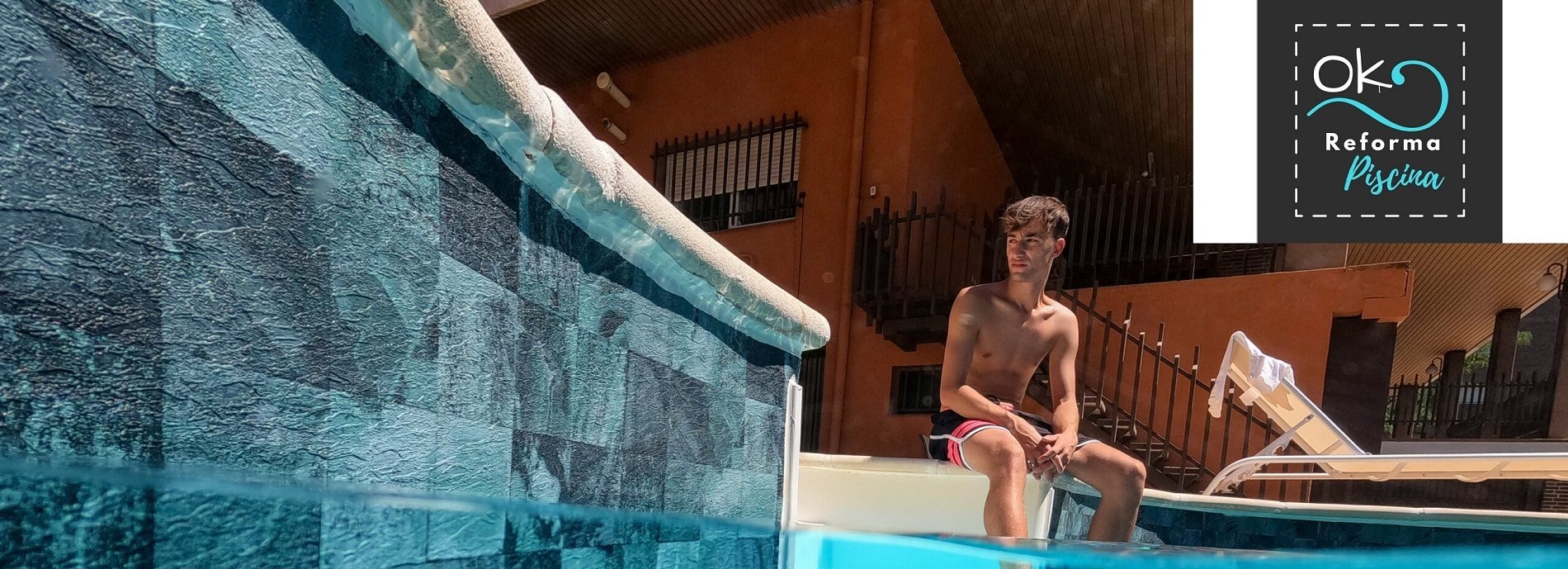
Table of contents of the page
In this entry of Ok Pool Reform we will tell you about one of the Aquagym variants, What is Watsu and who is it recommended for? Get introduced to this aquatic hydrotherapy technique and learn its benefits along with the recommendations for doing the exercises of this sport.
What is Aquagym
What is Aquagym?
To begin with, Aquagym is a sport discipline that is a variant of aerobics for all audiences which takes place in an aquatic environment (generally a swimming pool), therefore, obviously, it is carried out in the water; and combines the benefits of aerobics or arerobic and swimming.
What is Watsu?
What is Watsu therapy?

Watsu (also known as Water Shiatsu) is a form of therapy that uses the power of water to help people relax and heal.
What is Watsu: Watsu is a form of aquatic bodywork that uses a combination of Swedish and Shiatsu massage techniques to provide relaxation, greater flexibility and overall deeper connections with your body.
What other names does Watsu receive?

Watsu hydrotherapy is also known as aqua shiatsu, aqua dance, and aqua body work.

Watsu is a holistic massage technique
What is a holistic massage technique: Holistic massage techniques are designed to provide a wide range of benefits for the body and mind.
- They use a variety of movements, pressures and strokes that can help improve circulation, reduce tension, relax muscles and increase flexibility.
- Holistic massage techniques are also designed to be gentle and soothing, making them ideal for people looking for a relaxing and rejuvenating treatment. Because these techniques use gentler strokes than traditional massage methods, they are often a popular choice for pregnant women and children, who may find it difficult to tolerate the stronger pressures of traditional massage.

When watsu aquatic therapy was developed
It was developed in the 1980s by Harold Dull, an American acupuncturist and massage therapist.
- During a typical session, the patient floats in warm water while receiving a combination of stretching exercises, massage techniques, and shiatsu pressure points from their Watsu practitioner.
- This combination helps improve circulation, reduce stress levels, relieve muscle pain and tension, and generally promote healing throughout the body.
- Despite being over thirty years old, Watsu continues to attract new patients looking for natural ways to treat health problems without drugs or surgery.
Watsu what is it
What is watsu hydrotherapy: principles, indications, contraindications and effects
What are some of the main benefits of Watsu?

Benefits associated with watsu aquatic therapy
Ultimately, there are many benefits to Watsu therapy, but at the end of the day, it circumstantially improves overall health and well-being.
Multiple PROS to practicing Watsu, and by virtue of this, some benefits may simply be to relax and de-stress after a long day of work or school, while others may be attracted by the possible health benefits.
We then cite many different reasons why people choose to participate in Watsu sessions.

- To begin with, the practice of watsu relieves muscle pain and tension. reducing pain and stiffness: emphasize again that this type of therapy is very beneficial to relieve muscle pain, herniated discs, circulatory and respiratory problems, etc.
- In second place, Thanks to its gentle and relaxing movements, Watsu Therapy improves body flexibility (it increases mobility by loosening the joints, which can reduce the amount of pain felt by people suffering from conditions such as arthritis or fibromyalgia, remember that maintaining muscle strength is another way in which watsu can be beneficial in combating this type of conditions, as well as to improve balance and coordination).
- Thirdly, it improves circulation and blood flow throughout the body.
- In addition, can be used as an excellent form of self-knowledge, since it serves as a excellent way to enter inside ourselves, improving the state of mental health. Watsu is more than just physical therapy; It can also be a valuable tool for treating conditions such as depression and anxiety, as well as promoting general GNC wellness and well-being. The heat of the pool combined with the relaxing movements of your practitioner will help you relax and release any stress or worry that may be plaguing your mind.
- Hence increases the quality of sleep and energy levels of its practitioners.

Gain mental health and strength: Fight negativity with Watsu therapy
Watsu Therapy is used to combat the negative effects that stress produces on people's physical and mental health.
At its core, watsu therapy is a gentle form of massage or touch therapy that involves being held by an experienced practitioner while floating in hot water.
- This type of aquatic bodywork can be customized in many ways, such as stretching, joint mobilization, breathing techniques, and guided imagery.
Overall, watsu therapy has been shown to be effective in helping treat a wide range of health problems and chronic conditions, such as depression, anxiety, fibromyalgia, neck and back pain, stress-related digestive problems, etc
Happiness and placidity after Watsu sessions

Objective of a Watsu session
In general, the goal of a watsu session is to promote relaxation, stress reduction, and improved well-being.
Through gentle movements and touches in the water, the practitioner can help relax the body and mind, stimulating circulation and relieving muscle tension or stress. In addition to these general benefits, watsu sessions can also be used to treat specific health problems, such as chronic pain or anxiety. So if you're looking for ways to improve your overall physical and mental health, consider booking a watsu session today!
Watsu is a unique form of therapeutic massage that uses water as a medium for relaxation and stress relief. The main objective of watsu is to promote physical and mental well-being by applying gentle stretches and movements in the water. This helps improve circulation, relieve muscle tension, and reduce pain or anxiety. In addition to these general benefits, watsu sessions can also be customized to specific health concerns. So if you're looking for effective ways to manage chronic pain or relieve stress, consider booking a watsu session today
What is experienced in a Watsu session

A Watsu session is designed to relax, rejuvenate and revitalize the body. Using gravity for support and resistance in connection with the therapist's hands and the flow through the water ensures that your entire being is relaxed from head to toe.
However, it's not just about relaxing, it's also about balancing your body's systems so you can function more easily during your daily life. During a Watsu session, some people experience:
- 1. Improved blood circulation by exercising muscles that are not usually exercised on land
- 2. Reduction of pain and tension in areas where bones fit into muscles
- 3. Release of emotional trauma due to past events (including pregnancy)
- 4. Increased energy, vitality and sense of well-being
- 5. Increased mobility and flexibility in joints and muscles due to increased blood circulation and removal of toxins from body tissues
- 6. Reduction of muscle spasms by stretching them in water
- 7. The release of endorphins, which are chemicals that reduce pain sensations and make you feel relaxed, happy, energized and more positive about your life
Of course, Watsu is a very individual experience and the benefits of a session will differ from person to person. However, whatever your experience, you are likely to feel relaxed and rejuvenated after a session.
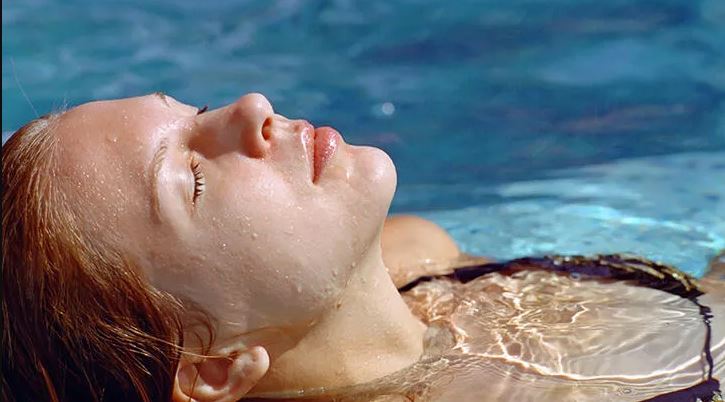
Real wellness session experience after Watsu session
I had a wonderful experience in the watsu session. Throughout the session, I felt a sense of peace and calm.
- The hot water was so calming and relaxing it was like floating on air. Additionally, being touched by another person gave me a positive feeling of care and attention. It was truly beautiful, one of the best experiences I have ever had in my life. My body felt loose and relaxed after the session, which helped calm my mind too. Overall, I would definitely recommend this therapy to anyone looking for some time to relax or de-stress from their busy life.
Client opinion about the sensation after watsu session

Attending a watsu session was an incredible experience.
When I entered the pool for the first time, I was nervous because I didn't know what to expect. The water was very warm and relaxing, and as soon as my body entered it, all my tension disappeared. It was almost like a form of meditation. I began to float and moving in the water was effortless. I felt like my body was beginning to be free, a new sensation that I enjoyed exploring by all means. I was relaxed but at the same time full of energy, although at times my limbs became very heavy (which is normal for me after an intense workout). By the end of the session, I could feel my head filling with a ton of new information and emotions that I had not experienced before. I was excited to see what was going to happen next.
It's really amazing how much you can relax just floating in the water, especially in an environment as open as the pool at this place where everyone had their eyes. Instead of judging what was happening, I saw it as a form of communication between my body and the person guiding me. I felt like I could let go and be myself without fear of being judged or criticized.
The experience definitely took me out of my comfort zone, but in the best way possible. By leaving all my preconceptions and judgments behind, I was able to learn a lot about myself and enjoy the present moment. It felt like an emotional cleanse because I was releasing a lot of negative energy (which is always good).
Overall, the session helped me connect with my body in a way I had never experienced before. Touch can be very powerful, but in a way that is healing and non-sexual. The person guiding me was kind and respectful, and I never felt controlled or limited in any way. It was truly one of the most powerful and transformative experiences of my life. I can't wait to try it again!
Possible risks of Watsu hydrotherapy

Conditions to review before performing Watsu hydrotherapy
When performing watsu hydrotherapy, it is important to be aware of the risks and possible complications that may arise.
- Firstly, a potential risk of Watsu hydrotherapy is the risk of drowning.. This can occur if you lose the ability to breathe or maintain consciousness due to pressure changes in the water and your body's reaction to them. Therefore, it is important to remain calm and aware during the session, and be sure to communicate any discomfort, disorientation, or other problems that arise to your practitioner.
- Similarly, Other dangers may include symptoms such as: high fever, serious heart problems, cardiac arrest, increased or decreased blood pressure, serious urinary tract infections, open wounds, epilepsy, severe or uncontrolled diabetes, kidney diseases, multiple sclerosis (due to sensitivity to heat) and contagious diseases transmitted by air or water.
- Another potential risk associated with Watsu hydrotherapy is muscle tension. Because this treatment involves being held and moved by a therapist while submerged in water, there is a chance of injury if the movements are performed incorrectly or carelessly. For this reason, it is very important to undergo Watsu therapy only with a trained professional who has experience working with and moving individuals properly through water.
- In addition, People with a recent brain hemorrhage should avoid watsu therapy altogether.

Consult a doctor before practicing Watsu
If you have any pre-existing conditions or are taking any medications that may affect your ability to safely perform watsu hydrotherapy, it is important to consult with your doctor before beginning treatment.
- It is also crucial that you monitor your symptoms closely during and after watsu therapy, and be sure to alert your therapist if you experience any adverse effects or symptoms of concern.
- By taking these precautions, you can help minimize the risks associated with watsu hydrotherapy, and enjoy all the benefits this therapy has to offer.
In summary, although there are some potential risks associated with Watsu hydrotherapy, these risks can be reduced or avoided by working closely with a trained professional who has experience in this type of treatment. If you are interested in trying Watsu and believe it may be beneficial to your health, be sure to discuss the possible risks and benefits of this treatment with a health professional before you decide to try it for yourself.
What is Watsu for and who is it recommended for?

Who is watsu hydrotherapy recommended for?
As we have explained previously, watsu is a form of aquatic bodywork that involves gentle stretching, massage techniques and other forms of movement in the water.
In this way, it is worth mentioning that the practice focuses on the connection between mind, body and spirit and can help increase feelings of relaxation, improve circulation and range of motion, reduce chronic pain or symptoms of stress and encourage creativity.
Watsu is typically recommended for anyone looking to release tension and stress, feel more relaxed, increase their range of motion.
Watsu is a therapeutic aquatic practice that is especially beneficial for pregnant women.

Advantages of watsu during pregnancy
- During pregnancy, the body goes through many physical and emotional changes, and it can be difficult for women to cope with.
- Watsu helps relieve the stress and tension of pregnancy by providing a relaxing and calming experience in hot water.
- Some of the main benefits of Watsu for pregnant women are improved circulation, reduced joint pain and muscle tension, and increased relaxation.
- So if you're looking for a way to ease the discomforts of pregnancy and enjoy some much-needed downtime, consider giving Watsu a try!
Watsu is an aquatic body therapeutic treatment that can provide many benefits during pregnancy, such as:
- *Relieve muscle pain and tension
- *Improve circulation and reduce swelling
- *Reduce stress and improve mental health
- *Help relieve discomfort from various pregnancy-related conditions, such as back pain, sciatica, and pelvic pain
Although watsu can be beneficial at any time during:
- *During the first trimester, Watsu can help reduce nausea and vomiting that are common at this time.
- *During the second and third trimester, Watsu can relieve pregnancy-related discomfort, while helping to calm and relax the mind and body.
With these benefits, it is no wonder that many women choose to receive watsu during pregnancy. If you are considering this option, it is important to find a professional therapist who has experience working with pregnant women. And of course, it's also essential to consult your doctor to make sure watsu is right for you.
Who is watsu aquatic therapy for?
Recommendations from people who should do watsu hydrotherapy
Next, we mention the group of people to whom we most suggest introducing themselves to watsu aquatic hydrotherapy.

- Firstly, watsu is often recommended to people suffering from stress or anxiety, due to its calming nature and ability to promote deep relaxation. On a memorial level, Watsu is a great way to de-stress and relax, especially if you have an active lifestyle or are under a lot of stress.
- Watsu Therapy is also highly recommended for people with self-esteem problems, since it allows you to connect with the body and release genes related to stress. Therefore, Watsu Therapy can help us improve our physical and emotional well-being, in addition to being an excellent form of self-knowledge.
- In short, Watsu also has therapeutic applications For people struggling with depression, trauma-related disorders such as PTSD (post-traumatic disorder) and anxiety related to chronic illness.
- Additionally, it can help improve flexibility and range of motion, leading to improved overall health and well-being.
- Likewise, whether you have suffered an injury or are looking to prevent one, Watsu can be a great way to heal and strengthen your body. It is usually recommended for people who are physically active or who are under a lot of stress.
- Additionally, it may be beneficial for people with certain conditions that involve inflammation or restrictions in joint mobility, as well as those who suffer from insomnia or seek relief from persistent muscle tension or stiffness.
- Finally. Watsu is also a great option for pregnant women as it can relieve pregnancy-related pain and tension, fImprove blood flow and circulation, reduce swelling and improve sleep quality. For this reason, the practice can help prepare for childbirth by increasing the flexibility of the spine and pelvis, promoting optimal positioning of the fetus and facilitating better communication between mother and child during childbirth.
Overall, Watsu is an excellent way to promote overall well-being at any stage of life or for any health condition.
What requirements must the pool where Watsu therapy is practiced meet?
Safety in the watsu aquatic therapy pool
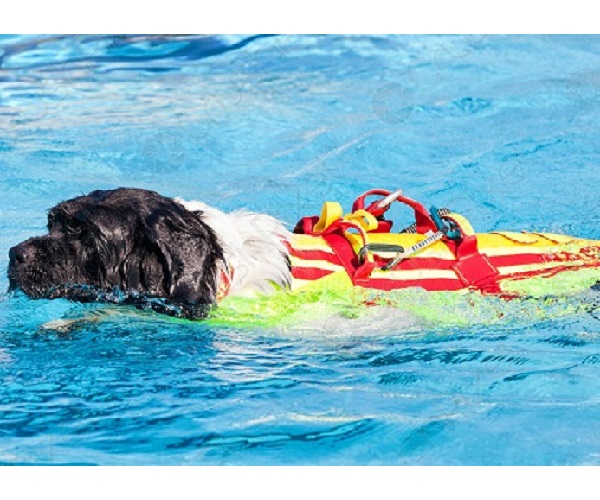
Pet pool safety: tips to avoid and how to act against drowning
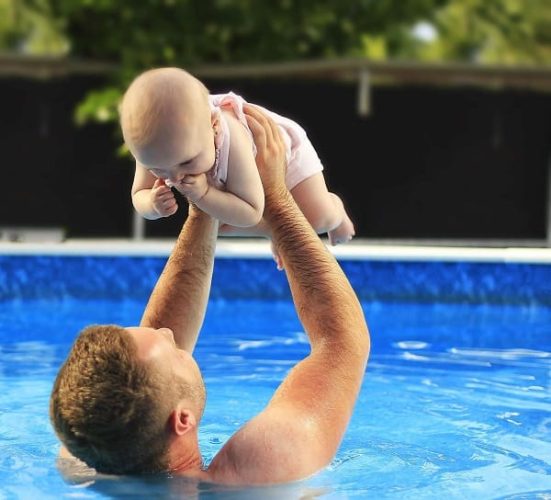
Pool regulations, rules and safety tips
What are the minimum requirements for a Watsu pool?

Necessary measurements of the pool to be able to practice Watsu
- A Watsu pool must have a water surface of at least 3,5 x 3,5 meters, with a depth of between 1,05 and 1,25 meters and a temperature of 33,5-35 degrees Celsius.
- To offer the best possible experience to Watsu participants, it is necessary to have a well-maintained filtration and disinfection system, as well as adequate heating mechanisms.
Watsu is practiced in a hot pool or spa.
The pool temperatures should be around 32-37°C, depending on your preferences. This is important for comfort and safety when practicing Watsu, as it allows you to relax comfortably in the water and prevents overheating.
- If you are not sure what temperature is right for you, consult a professional or try it initially until you feel comfortable.
- For more information on water temperature, talk to your Watsu therapist or trainer. They can guide you to make an informed decision that fits your individual needs.
Maintenance requirements for the Watsu hydrotherapy pool

What pool water values can we NOT neglect?
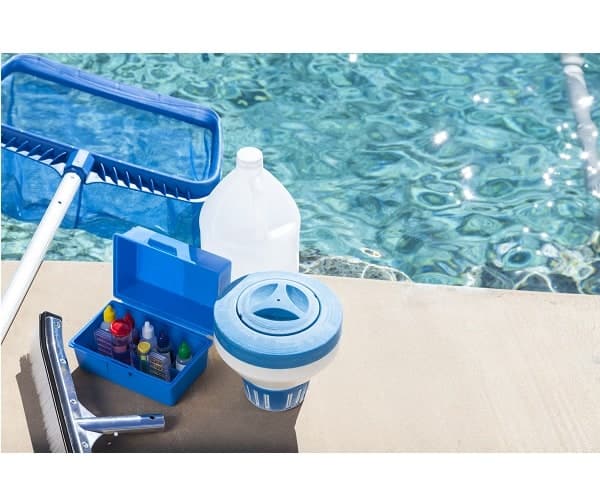
Useful guide to know how to clean the pool
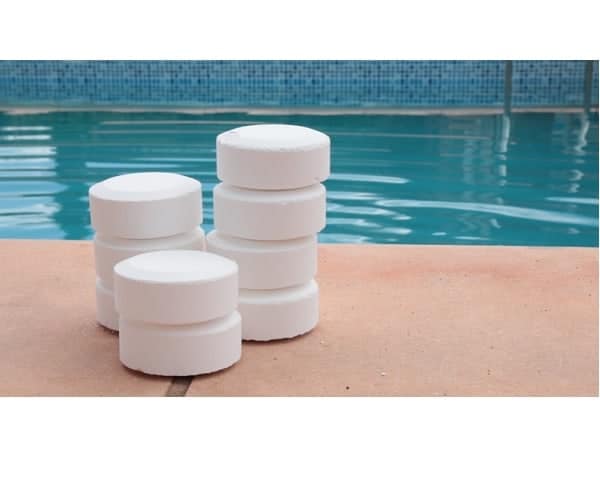
What are the essential pool chemicals for maintenance?
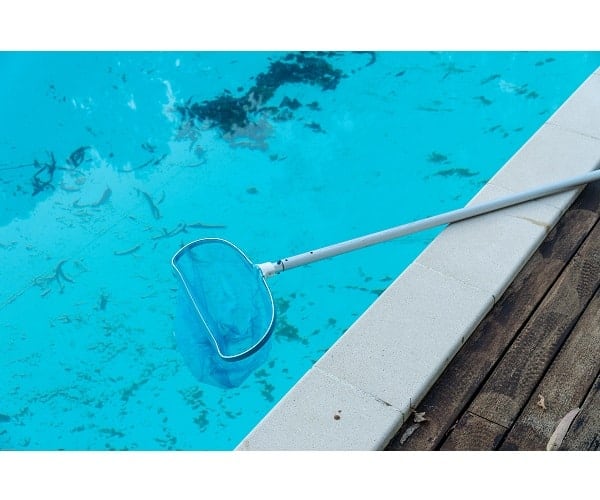
Guide to maintaining a pool with water in perfect condition
- Another aspect of pool comfort is checking the pH level and using chemicals if necessary to keep it around 7,2, which is considered neutral in most cases.
- Truly, there are many requirements to ensure that the pool does not harm our health, which is why we leave you the maintenance guides (in case you do Watsu sessions in your private pool).
- Regarding pool reviews, this is something your Watsu therapist can advise you on as they will have experience working with different water qualities and may have a preference for using certain products to keep the pool within an acceptable range.
It is important to find the correct filter and circulation system settings that will best work with your specific pool type.
The type of pool equipment you choose will depend on your needs, budget, and personal preferences.
- For example, people who swim regularly in a public pool may want to install a chemical feeder so they do not have to manually add chemicals each time they use the Watsu pool.
- Some pools are also equipped with ultraviolet lights or ozone generators that control the growth of bacteria, which also makes them easier to maintain and keep clean over time.
- You may want to add other features to the pool, such as massage jets or underwater speakers so you can listen to music while doing Watsu therapy sessions, if that helps you relax more.
- After all, the type of pool accessories and additions that best suit your needs is something you can discuss with your trainer or Watsu therapist when deciding what type of pool to install in your home gym or spa.
What is the origin of Watsu?
Origin of Watsu hydrotherapy
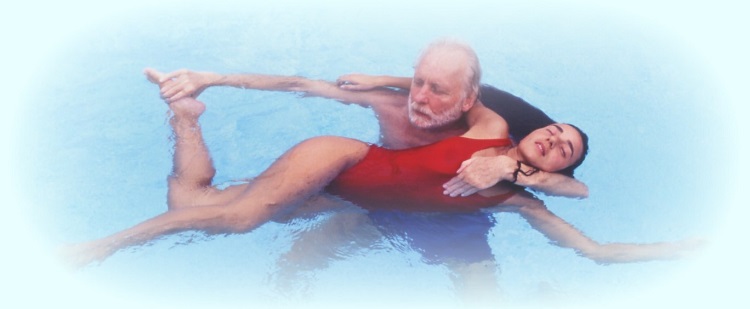
Watsu was developed in the late 70s by Harold Dull, who was part of the Shisen-do school of Japanese Zen Buddhism.
- Watsu is a healing modality derived from Water Dance, developed by Harold Dull in 1973. It created quite a buzz as it was said to have miraculous healing powers.
- To begin with, in 1980, Harold Dull developed Watsu, applying his knowledge of the stretches of Zen Shiatsu he had studied in Japan, while floating people in hot water.
- Zen Shiatsu incorporates stretches to release blocking points along our meridians The channels through which our Ki or life force floats.
- In the East, stretching is an older therapy than acupuncture and focuses on certain points along the meridians.
What Dull discovered regarding Watsu
- Similarly, Dull discovered that certain movements and positions in the water could help open areas of his body that had been blocked or stiff by years of manual labor.
- He discovered that moving while submerged in water was able to relax his muscles and joints more deeply.
- From there, he began to develop a series of exercises and movements specifically adapted to the aquatic environment.

Origin of the word Watsu
Where does the word Watsu come from?
The word "Watsu" comes from Dull's own name - Harold Watts Duhl - plus the French suffix "-er", which denotes an agent noun. Thus, “Watsu” means “Harold who waters,” or someone who practices Watsu.

Over the years, many different people have contributed to the development of this unique form of aquatic bodywork.
Under the supervision and leadership of Harold Dull, hundreds of students have been trained in the practice and theory of Watsu.
Many of these students have gone on to establish their own training programs around the world. Although there are many differences between the various schools, they all aim to encourage expansive relaxation by immersing the entire body in water for therapeutic purposes.
What is Watsu therapy by Harnold Dull?
What is watsu aquatic therapy by Harold Dull?

What is Watsu by Harold Dull based on?
Stretching improves muscles, increases flexibility and joint mobility. These effects can be amplified and deepened when we stretch someone while floating the body in hot water.
Sessions are usually done in a hot pool with an experienced Watsu practitioner who will gently guide you through different movements that can help relieve your symptoms.
- This is shared by physical therapists who work with people with special needs and achieve greater gains in range of motion compared to traditional methods.
- (These results are in the process of further research Support, balance, move the entire body or stretch a leg or arm, generating the greatest possible resistance to improve the response of the beneficiary.
- In Watsu it occurs when the member is worked distantly. When the entire body is in continuous movement, each movement flows in relation to the next. There is no way to anticipate what comes next and build resistance. Without pain, the body can move beyond limitations, fears or other impositions.
- A new opportunity to stretch the connective tissues that are much neglected and give a restricted body a new chance for freedom
- The hot water and continuous support offered are ideal for releasing the spine.
- The pressure on the vertebrae is reduced and the muscles relax, without limiting contraction.
- Blood circulation removes muscle metabolic waste and relieves muscle pain and fatigue.
- The lower oxygen demand, found in this less severe condition, helps calm breathing.
- Relaxation of tension in the spine, muscles and removal of excess pressure on the nerves improves muscle tone; The functions of the body and the organs connected to these nerves allow the movements of the spinal column to reach high levels of amplitude within the water.
- These movements would not be possible on the floor. This freedom for the spine is so important that it is always the focus at the beginning of every Watsu session. Even for people with little flexibility,
- When placed in more complex positions for Watsu stretches, they receive great benefits from gentle, gradual lateral movements and twists. Only stretching and rotating the arms and legs open the meridians and flow through them. The movement of the spine helps pave the way for the flow of energy. By experiencing this greater flexibility and freedom, we reprogram the recipient to face their life outside of the water with greater equanimity and flexibility. Many effects in the emotional field are related to trust and are linked to Watsu by the unconditional hug. Much of a person's life, their connection to sustaining life through breathing, is in the trust of the arms of a Watsu practitioner. Watsu affects all levels of our being, emotional, psychological and spiritual, as well as physically.
What is watsu by Harold Dull?
what is watsu hydrotherapy by Harold Dull
Why is it important to stretch before a Watsu session?

Stretch before and after practicing Watsu
Stretching before a watsu or shiatsu session can help reduce the risk of injury and improve circulation.
Why we should stretch in the water before and after Watsu
Before and after exercise, be sure to do some gentle stretching exercises for at least 5-10 minutes. This will loosen your body and prevent injuries from occurring during the session.
- Don't rush your stretching routine, but focus on breathing deeply and relaxing into each stretch as much as possible.
- Stretching also helps warm up your muscles, which improves flexibility and range of motion.
- This will help increase blood flow and release any tension in your muscles or joints, allowing you to fully enjoy your watsu or shiatsu session without worrying about injury.
- Lastly, make sure to listen to your body and only do what feels comfortable.
- If you feel pain or discomfort, stop and talk to your therapist about what you're feeling. Stretching should never be painful.
- Finally, note that it is also important that you take things slowly when you stretch.
If you continue to stretch regularly before and after your sessions, it will become second nature to you and part of your regular routine.
- The more flexible your body is, the better prepared you will be to relax in the water and enjoy the benefits of watsu or shiatsu therapy.
- And as an added bonus, you'll also notice that regular stretching can help improve your overall health, energy levels, and well-being.
- So start today with some gentle stretching before your next session and, if possible, at the end of the session as well.

What is Watsu stretching?
What are some examples of stretching exercises and massage techniques used in Watsu?
- Forward push-ups: These stretches help lengthen the spine and release tension in the neck and shoulders.
- Twists: These stretches help increase flexibility, stimulate internal organs and improve circulation.
- Mobilization techniques: These techniques use gentle rocking movements to provide a deep massage of the muscles and joints.
- Deep tissue work: This type of massage is used to release deep tension and improve circulation.
What are Watsu stretches like?
What should the stretches be like before Watsu hydrotherapy?
- Later, in the video you can see the stretches to do in the water before doing water sports, because there is nothing like a good aquatic stretching session before and after a sports session in the sun.
General questions about Watsu sessions

Is it necessary to know how to swim to do Watsu?
To carry out this activity it is not necessary to know how to swim, we simply have to relax and let ourselves float.
While some people may have reservations about floating in warm water without the aid of flotation devices, swimming skills are not necessary to do Watsu.
- In fact, Watsu is generally considered a safe activity for beginners and experts alike.
- However, if you have any existing health conditions or injuries that limit your mobility or make it difficult for you to walk on land, it is always recommended that you consult with your doctor before starting any new therapy.
- However, with the right supervision and guidance, you should be able to enjoy all the benefits that Watsu has to offer.
What should I expect during my first Watsu session?

If you're new to Watsu, your first session will likely be a little different than you might expect.
During most Watsu sessions you will be gently guided through a series of movements and stretches that are very relaxing, especially if you have any areas of tension or stiffness in your body.
You are also likely to be guided through deep breathing exercises to help you fully relax, as well as visualizations that could help you release any emotional blockages or tension you may be carrying with you.
Whether you are a beginner or an experienced Watsu practitioner, your first session will likely involve some adjustments as your body becomes more comfortable with the movements and stretches of Watsu.
As you relax more with each movement, your body may naturally change position in response to your partner's weight, making adjustments and even slight movements necessary.
During the session itself, you may experience a number of different sensations, including:
- Heat and tingling of warm water
- Light pressure from the practitioner's hands
- Gentle rocking movements
- Numbness or “pins and needles” sensation in the arms, legs, or feet
- If you have any questions or concerns about what to expect during your first Watsu session, be sure to talk to your doctor ahead of time.

How long does a Watsu session last?
Watsu session duration
A typical Watsu session usually lasts between 45 minutes and an hour and a half.
However, the actual length of the session will depend on several factors, such as comfort level, specific techniques used, and time available.
In general, a typical Watsu session lasts between 45 minutes and an hour and a half. The actual length of each session will depend on several factors, such as specific needs, comfort level, time constraints, and techniques used during the session.
Generally, Watsu sessions start with some warm-up stretches to get you comfortable in the water. This is followed by some very gentle massage techniques to help relax the body and prepare it for the deeper work that will follow.
Once you are fully relaxed, your therapist will begin performing various movements and postures designed to gently stretch and compress different parts of your body. These moves can be quite subtle at times, but they have a powerful effect on both your physique and your health. For example, Watsu movements can help improve circulation and relieve tension in muscles and joints.
However, regardless of the length or intensity of each session, many people find that regular Watsu therapies can have a significant impact on their overall health and well-being.
If you are interested in trying a Watsu therapy for yourself, be sure to consult with your healthcare provider first to discuss any potential risks or complications associated with this type of aquatic treatment.
With proper guidance from your therapist and regular check-ins with your healthcare provider, you can enjoy all the benefits of Watsu therapy in a safe and supportive environment.
Watsu hydrotherapy can be individual or group

Watsu is a holistic therapy that can be practiced in a group or individually and requires the presence of a professional to guide the therapist's gentle movements on the patient's body.
- Likewise, in this therapy the patient not only benefits from the mobility and flexibility they acquire but also from the relaxation they experience when being immersed in hot water.
- In addition to increased mobility and flexibility, patients also report experiencing deep relaxation while soaking in warm water during their session, with temperatures between 35 and 40°C.
- The therapist gently holds his patient to help him lose the feeling of body weight and improve respiratory and circulatory abilities.
- This type of massage positively influences our nervous system by releasing endorphins and other chemicals that can help combat the effects of stress.
What is a Watsu aquatic technique session like?
What should I know to start the Watsu aquatic technique?

In a Watsu session, the aquatic therapist uses touch and movement to help you "release" your tensions and facilitate relaxation.
- This creates an ideal state for healing. If you feel tense or uncomfortable during the session, tell your therapist so they can make the necessary adjustments to help you relax.
- Watsu can be performed in a small pool or hot tub with about 3 meters of water at a temperature of 33°C.
- Most sessions last between 35 minutes and 1 hour and 15 minutes.
- The patient only wears a swimsuit and does not wear a shirt during therapy.
- In some cases it is better to remove all jewelry as well; rings, watches, etc., as they can get caught on pool equipment.
Typical Watsu Therapy Session Stages

Overall, Watsu is a highly personalized therapy that can be tailored to meet each patient's specific needs.
- So if you're looking for a unique way to relax and improve your health, consider booking a Watsu session today!
- And with the help of an easy “Watsu near me” search, you can find a local doctor in no time!
For Watsu therapy to be effective, it must be performed by an experienced water practitioner who is also trained in the principles of massage and reflexology.
- Additionally, both parties should work to develop trust in the session, as this helps create an openness that allows deeper relaxation to occur.
- Watsu is a very relaxing therapy that is often recommended for people suffering from high levels of stress or anxiety. If you are interested in trying Watsu, talk to your doctor or therapist to find a practitioner near you. With the right environment and support, this technique can help you completely relax and leave any worries behind as you enjoy floating on the water.
The most basic form is a passive session, in which the client remains very still while the therapist holds them and massages them.
- This allows you to relax into a deep meditative state, which offers numerous health benefits, including lowering blood pressure, reducing stress hormones, improving circulation and breathing patterns, as well as increasing of dopamine production (which helps reduce pain).
- For this reason, at the beginning of the Watsu session, the therapist will ask you to relax in an upright position and then gently move you around the pool with his or her hands underneath your body. This gives him a sensation similar to that of floating, so that his body can relax completely while remaining supported. As the therapist moves you, he or she will be attentive to any tense areas and try to relieve muscle tension.
These stages include safety and comfort, as well as therapeutic values such as relaxation, stress reduction, increased mobility, and improved circulation.
- In addition to these general benefits, a watsu session can also help with specific health problems, such as chronic pain or anxiety.
- Commonly, the goal of a watsu session is to improve overall physical and mental health and well-being.
When starting the session, it is important to have a clear idea of the overall flow of the session.
- The practitioner will ensure that the client feels comfortable in each position they adopt as they progress through the Watsu session.
- To maintain this feeling, it is important for the client and practitioner to communicate throughout the session to ensure that all needs are met.
- More experienced practitioners may also choose to include different techniques in addition to the basic Watsu movements for this purpose.
At the beginning of a watsu session, the practitioner will take time to establish a sense of safety and comfort for the client, helping them get into a comfortable position in the water.
- This may involve gently guiding him through some simple movements, such as gently bending his arms and legs or rolling onto his stomach.
- Once the client is in a stable position, the practitioner will begin a series of gentle movements designed to promote relaxation and circulation.
- These may include more complex stretches and traction techniques that help relieve tension in the most affected areas, such as the neck, shoulders, feet, and lower back.
As the session progresses, the practitioner will continue to monitor the client's well-being and provide support where necessary.
- This may involve supporting your weight during longer stretches or providing gentle pressure on specific parts of your body.
- At any point during the session, the therapist can also adjust their movements based on the client's opinion of what is comfortable or uncomfortable.
Types of Watsu techniques

Whatever the type of watsu session, therapists offer clients deep relaxation and the opportunity to let go of stress, emotions and pain while channeling healing energies through their hands and into the client's body.
- Regardless of the physical or emotional issues being experienced, a watsu session can help bring the body to a more balanced state which can lead to improved health and well-being.
Free dance is a technique used for movement therapy in which the client and therapist move freely and explore different movements, sensations and sounds.
- Free dance therapy is a technique that helps clients explore their body movements, physical sensations, and sounds by moving freely with the practitioner.
- This form of therapy has been shown to be especially effective for people with mental health problems, such as depression or anxiety.
Another type of watsu technique is active watsu.
- In this modality, clients work with their therapists to move through the water using various postures or stretches similar to those found in yoga or other forms of exercise.
- Active sessions help develop strength and flexibility, plus a feeling of empowerment is fostered.
- Clients can also experience the benefits of an active session, such as improving blood circulation and oxygenation, releasing muscle tension, promoting faster healing from injuries or surgeries, and decreasing chronic pain.
Another type of watsu technique is rebalancing.
- In this modality, therapists use adjustments to correct imbalances in the body's energy centers (or chakras), which may be caused by physical trauma, emotional issues such as anxiety or depression, or unaddressed spiritual issues. Rebalancing sessions can help clients feel more grounded and balanced emotionally and spiritually, improve mental clarity and concentration, relieve chronic pain or insomnia, improve overall health and vitality levels, and even create a lasting change in their lives.
How Watsu exercises are performed
How to do watsu hydrotherapy exercises

Watsu exercises are a form of therapy in which you float in water and massage to promote relaxation.
One of the most used exercises is called the butterfly, in which the practitioner massages the person's back while they float forward. Then the two are reversed and while someone follows the same steps.
Watsu can also involve gentle rocking, or moving the person's body to the rhythm of the music. This can help increase circulation and improve the brain's oxygen supply, which can help the person relax. Some people also practice Watsu while doing meditation or yoga, as it can help them achieve a deeper sense of calm.
Watsu has been shown to be effective in helping people with certain health conditions, such as chronic pain, anxiety disorders, and depression. It can help reduce stress levels and improve sleep quality, which in turn can lead to better overall health.
l Watsu is a type of aquatic therapy that involves long, deep movements. Creates an environment that allows for relaxation and deep healing for both therapist and client.
Before starting a watsu session, it is important to adjust the water temperature. In general, it should be warm enough to relax the body without causing discomfort or overheating. In general, about 90-95 degrees Fahrenheit is ideal.
Some common watsu exercise techniques

Once you are in the water, there are several exercises you can perform with your client to help relieve stress and tension in their body through gentle movements and touches.
- * Gentle rocking – This movement involves moving the client back and forth in the water to relieve muscles and joints of tension and stress.
- * Passive stretching: This exercise involves stretching the client's limbs and back muscles to help them relax. It is a gentle movement that should be done slowly and carefully.
- * Fingers under water – In this technique, the therapist gently presses his fingers into the water, just above the sacral area or hips of his client. This can help relieve tension in the lower abdomen and improve circulation throughout the body.
Videos of Watsu exercises
Examples of Watsu exercises
Watsu exercises
Watsu hydrotherapy exercises
Are you interested in trying Watsu? Cheer up!! Watsu aquatic therapy is in fashion

Rising trend in watsu aquatic therapy
Watsu has become a very popular activity in spas and resorts, where it is often taught alongside other forms of massage.
- Additionally, many physical and occupational therapists use Watsu in their work with patients who have mobility problems or physical disabilities.
- And although most professionals recognize that Watsu should never be used to replace traditional medical treatments, they believe that it can be an important complementary therapy, especially when alternative options do not exist.
Sessions are usually done in a hot pool with an experienced Watsu practitioner who will gently guide you through different movements that can help relieve your symptoms.
Try the Watsu aquatic technique

Watsu aquatic therapy centers are increasingly popular among people suffering from various conditions.
Overall, Watsu is an effective hydrotherapy that can help people of all ages feel better both physically and mentally.
- So if you're looking for a natural way to treat common health problems without resorting to pharmaceuticals or invasive surgeries, consider trying Watsu!
This form of aquatic treatment is designed to help people improve their health and well-being, increase their range of motion, decrease joint discomfort, and relax the body and mind.

Where can I find Watsu practitioners near me?
With the help of an easy “Watsu near me” search, you can find professionals in your area who are experienced and qualified in this unique therapy.
Simply enter your zip code into a local search engine to get started!
If you are looking for ways to improve your physical, mental and emotional health, consider booking a Watsu session today!
Importance of properly choosing the Watsu hydrotherapy center and professional

Aspects to consider when choosing the Watsu hydrotherapy center
- One of the most important aspects when choosing an aquatic therapy center is finding one that has qualified professionals who have received specific training in watsu techniques. Ideally, the practitioner has current certifications from organizations such as the International Watsu Association (IWA) or Waterdancing.
- Another important factor to consider when looking for a watsu aquatic therapy center is the facility itself. The pool should be kept clean and free of debris, with a constant water temperature to ensure you don't feel cold or uncomfortable during your session. Safety is also very important at these pools, so look for one that has certified lifeguards on duty at all times.
Where to find watsu aquatic therapy centers

If you are thinking about trying watsu aquatic therapy as an alternative treatment option, there are many different places you can start.
In short, whatever illness you suffer from, watsu aquatic therapy can help relieve your symptoms and improve your overall well-being. With the right professional, a safe facility, and commitment on your part, you should feel the benefits of this form of treatment in no time.
Finding Watsu hydrotherapy professionals with the help of a quick search for “Watsu near me”, finding a local doctor will be easy!
Many hospitals have swimming pools specifically designed for this purpose, as well as private therapy centers and spas located throughout the country.
- Talk to your doctor or therapist about the benefits of this practice and find a qualified professional in your area.
- Many spas and wellness centers offer classes, so be sure to ask if there are any providers nearby that offer Watsu sessions.
- You can also search online for local professionals, but make sure they are licensed and have experience working with people similar to you, as not all Watsu providers are suitable for everyone.
- In conclusion, with proper preparation and guidance, you will be able to enjoy all the benefits of this relaxing therapy!
Importance of connection with the professional who gives you the Watsu class

The practitioner must always be aware of the client's needs and intentions at all times, but with free dance they are allowed to let go and lose themselves in the movement while remaining connected to each other at all times.
Perhaps more than any other part of a Watsu session, free dancing allows both parties to fully engage with each other and explore new levels of connection, as well as release stress through intimate physical contact. This technique can be done alone or as a couple, depending on the preferences of both parties[3]
As Watsu sessions progress, practitioners may also choose to incorporate other techniques to increase their clients' comfort, relaxation, and overall healing experience. Some of them are "Vortex" and "Geometric Patterns", both designed to relax the muscles of the back and shoulders while stimulating pressure points in various parts of the client's body. Other techniques include smaller movements, such as shaking, folding, shaking, floating and rolling, which can be used separately or in combination with each other[
Regardless of the techniques a practitioner chooses to use during their Watsu sessions, it is essential that they maintain close communication with all clients throughout each session.
- This not only helps them better gauge which techniques will be most beneficial for a particular client at any given time, but it allows them to ensure that the client feels safe, comfortable and relaxed in each position they adopt.
- This aspect of Watsu is especially important for clients who may have physical or mental limitations that prevent them from following the flow of the session as the practitioner intends.
Ultimately, although each Watsu session will be different depending on a number of factors, the overall flow of each session can always be the same through the use of carefully selected movement techniques.
- In addition to relieving stress for both parties during intimate physical contact, these movements also help practitioners and their clients connect with each other on deeper levels throughout their sessions.
Relax with the Watsu technique in the Doctor Rojas Health Park

Philosophy doctor Jorge Rojas health park
At Doctor Rojas Health Parks, we believe that true health is achieved through an integrative approach to medicine.
Our team combines the knowledge and experience of traditional Western medicine with the ancient wisdom of Eastern healing practices, including the concepts of Traditional Chinese Medicine (TCM), Ayurveda, and other natural and ancient therapies. Whether you are seeking preventative care or guidance during a health crisis, our compassionate and knowledgeable medical professionals will work with you on your journey to optimal well-being. So if you're ready to take charge of your health and well-being, contact us today at Doctor Rojas Health Parks!
What is Dr Rojas Health Park like?

Health parks are modern, well-equipped facilities that offer a wide range of health and wellness services to the community.
Whether you are seeking general medical care, specialized treatment, or simply want to take advantage of the many amenities available at these parks, they offer something for everyone.
Some of the highlights of the health parks are the comfortable waiting areas with high-speed Internet access and the on-site cafes and restaurants. Many of them also have state-of-the-art exercise facilities, such as gyms and swimming pools, as well as sports fields where you can participate in activities such as volleyball or soccer. Additionally, many health parks offer a range of medical services including primary care, specialty care consultations, physical therapy sessions, nutritional counseling sessions, and more.
Whether you are a local resident or a visitor to the area, health parks are a great option for all your health and wellness needs. Why not visit one today and discover everything they have to offer?
What are the Doctor Rojas Health parks like?
Facilities and services Doctor Rojas health parks

The Doctor Rojas Health Parks are located in several cities in the country. These parks offer affordable healthcare and community outreach programs, such as disease prevention initiatives and vaccination campaigns.
In the Health Park, you will find a variety of green areas and rural animals, perfect for promoting a feeling of calm and relaxation. Additionally, the park has a meditation hall, wetlands and bird habitats that allow you to experience the beauty of nature. There are also spaces to practice yoga and qi gong, as well as clinical laboratories and eco-offices where you can access expert advice on health and well-being. Other highlights of the park are an organic garden, seedbeds, natural water currents, lakes, parking spaces, an eco-spa with therapeutic treatments, flower and fruit trees, diagnostic rooms to evaluate your general health, and much more. . If you are looking for ways to improve your overall well-being or simply want to relax and enjoy nature, then Parque de la Salud is the place for you!
With the mission of creating healthier communities, Doctor Rojas Health Parks offer excellent medical care at reduced costs. Patients can visit any of these centers for routine check-ups or more complex procedures, such as surgery, all at prices that won't break the bank.
Additionally, these learning environments reach beyond the walls of their clinics through public health education efforts aimed at preventing disease and promoting well-being in local populations. This includes free vaccinations for children and adults, holding workshops on nutrition or healthy lifestyle habits, and conducting research on diseases that affect the community.
If you are looking for an affordable and convenient place to seek medical care, look no further than your nearest Doctor Rojas Health Park! These centers are located in cities across the country, so there is sure to be one near you. Visit the Doctor Rojas website to find the location closest to you today. And remember: Taking good care of yourself is important not only for your own well-being, but also for the well-being of the people around you. So take charge of your health by scheduling regular visits with a trusted doctor at Doctor Rojas Health Parks! You'll thank yourself later.
contact of: medical services of the Dr. Rojas Health Park
To finish, we leave you the contact link of: medical services of the Dr. Rojas Health Park
What is Dr. Rojas' watsu therapy?
What is the Watsu technique performed in Dr. Rojas' centers?
Next, in this video we explain that Watsu consists of a technique created in the USA, it is the combination of relaxation in the aquatic environment with Shiatsu massage (different pressures on the meridians to balance the body's energy).
On the other hand, inform you that if you want you can click on the link and learn about this and more services, which are provided in the Dr Roja Health Parks
Hydrotherapy in the Doctor Rojas Health Park
Recognized centers where they teach watsu aquatic therapy
Watsu International School

The International School of Watsu, or ISWatsu, is a leading provider of aquatic bodywork training and certification.
With branches and representatives in more than 10 countries, ISWatsu is committed to providing its students with the highest quality instruction and developing leaders in aquatic bodywork.
ISWatsu was founded in 1993 by Hariwansh Lal Kapoor, a pioneer in the field of aquatic therapy and yoga. Since then, ISWatsu has grown to become a recognized authority in aquatic bodywork with cutting-edge training methods and a strong global network of instructors.
At ISWatsu, we believe our students are the future leaders of this rapidly growing field. That's why our expert instructors work individually with each student to develop their skills and delve deeper into aquatic bodywork techniques. Whether you're new to bodywork or a seasoned professional, our comprehensive training programs will help you achieve your goals.
At Watsu International School, we are dedicated to providing high-quality training in bodywork in the water.

So if you are looking to pursue a career in aquatic bodywork, look no further than ISWatsu. With our comprehensive training and support, you can be sure that you are taking the right steps towards success in this exciting field. Visit us online today to learn more!
Our comprehensive programs are designed to meet the needs of professionals at all stages of their career, whether you are just starting out or looking to advance your skills and knowledge.
With over 18 years of experience setting the standards in this field, our expert instructors will guide you through every step of your journey, helping you gain the knowledge and practical experience necessary to excel in your chosen profession. Whether you want to work as a watsu practitioner in a spa or wellness center, or help pregnant women and seniors achieve better health and mobility through aquatic therapy, we have everything you need to be successful. .
Finally, we provide you with the link: ISWatsu International School.
